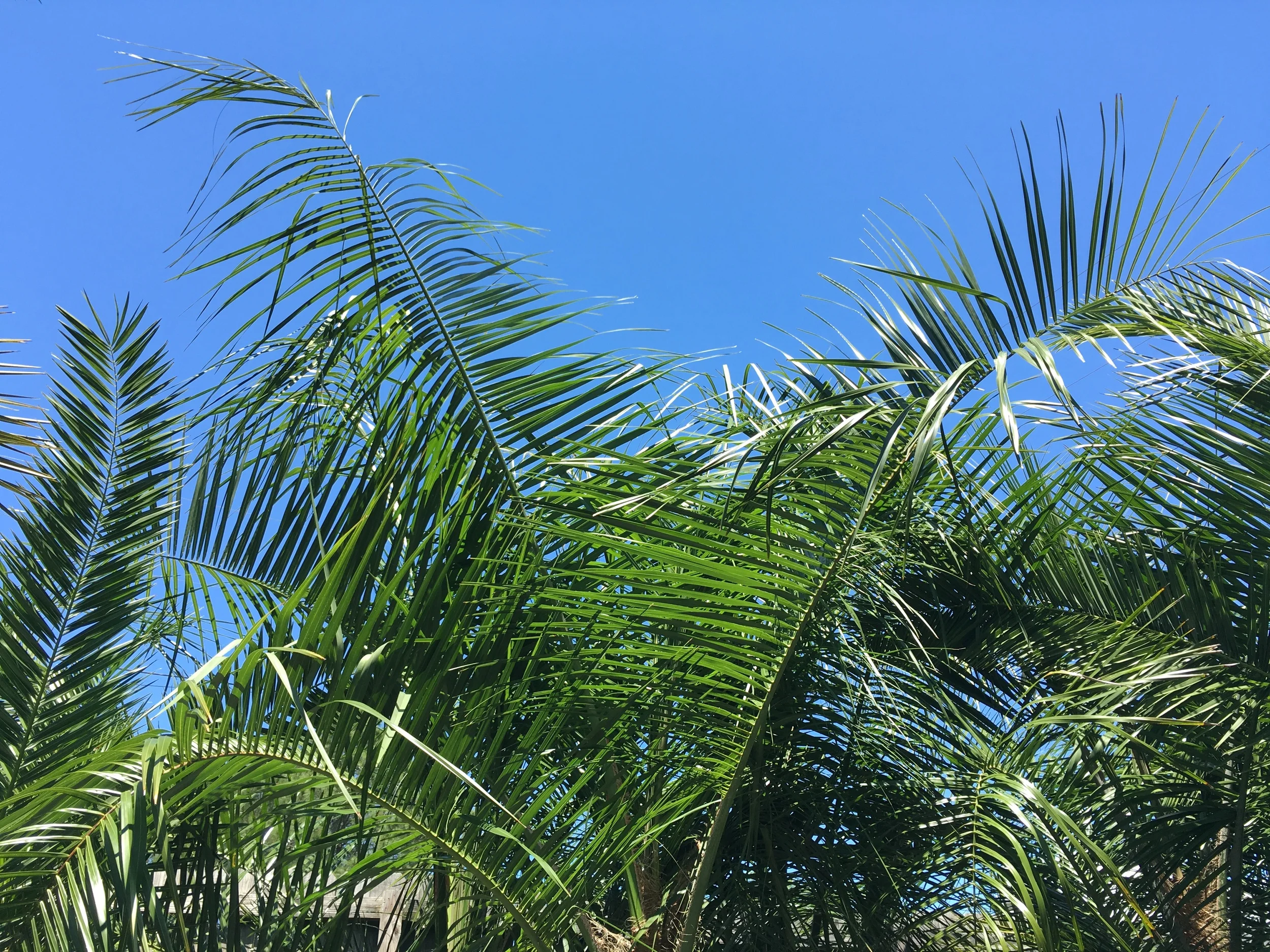Mule Palm - xButiagrus nabonnandii
This beautiful Hybrid Palm is the result of cross-pollinating the Pindo Palm (Butia odorata) "mother" and the Queen Palm (Syagrus romanzoffiania) "pollen donor". It is extremely cold hardy and can withstand temperatures to at least 14F (-10C) when established however frond damage is common at these low temperatures.
Mule Palms of Mississippi uses a proven cold hardy Queen Palm - Syagrus romanzoffiania which has survived our coldest winters for the past 20 years as the pollen donor for pollinating the Pindo Palm (Butia odorata) producing a more cold hardy Mule Palm. (see the Queen Palm and Pindo Palm information pages for more details).
With the Silver Queen Palm being more cold hardy and having a more robust trunk than the Queen Palm our Mule Palms do not suffer from frond damage as quickly and have a more robust trunk.
Butia x Syagrus var. litoralis. Seedlings are now available as of spring 2017 by Mule Palms of Mississippi.
The Mule Palm is the nearest Coconut Palm (Cocos nucifera) lookalike being grown. It is considered sterile, hence its nickname ‘Mule Palm’, and all Mule Palms must be produced by painstaking hand pollination.
A name xButiagrus nabonnandii was created from a combination the parent genera, Butia (Mother) and Syagrus (Donor). The species name honors Paul Nabonnand a French horticulturist who first reported the hybrid in the early 1900’s.
To produce Mule Palms it takes a tremendous amount of work to create viable and true seeds. On the seed producing Butia flowerstock all of the male flowers must be meticulously removed manually to prevent self-pollination by itself. Only after this can the Queen pollen be put onto the receptive Butia blossoms. This takes a lot of experience, effort and time working in the palm canopy on a ladder during the hottest months of the year (July & August). This is one of the reasons this Hybrid is so rare and more expensive than the common Queen Palm.
The Mule Palm is one of the most beautiful of all the frost-hardy pinnate-leaved palms. Its rarity and useful size make it a treasure for warm climate gardens, bringing coconut-like aesthetic lushness to areas where the frost-tender Queen Palm and true Coconut Palm would not survive. Young Mule Palms usually grow with hybrid vigor at a rapid pace (slower than the Queen Palm and much faster than the Pindo Palm) and when established can be expected to survive low temperatures to near 14F (-10C) zone 8b once established. Some have survived temperatures as low as 10F (-12C) zone 8a with some frond damage, depending on the individual tree its established age, location and its unique inheritance. Although compact enough for small courtyard gardens, with age the Mule Palm assumes majestic proportions (see photo of specimen size on this page), and in clusters or pairs will produce gracefully curving trunks and lush crowns reminiscent of the Coconut Palm. These specimens are unique and ideal for avenues, group plantings or any landscape purpose residential or commercial.
Mule Palm seed germinating recommendations…
Mule palm seeds germinate best planted ½” deep in a moist soil (NOT WET) with a consistent temperature of 90 degrees Fahrenheit.
IMPORTANT! With these temps the soil will dry quickly hence be mindful and check moisture morning and evening.
With a small amount of seed some folks use a large heavy duty cardboard box to cover the seed tray and a small space heater and a thermostat with the thermostat probe at the seed to ensure consistent temperature control.
Propagation mats under seed bed and on top can also be used with a thermostat, Note the thermostat probe should be at the seed. Always use another thermometer to verify the soil temperature.
I have a friend who uses an old freezer with a space heater and thermostat to maintain the 90 deg. Another who uses hot water running through tubing inside the seed bed at bottom of soil.
We get about a 60% germination rate
Culture: xButiagrus nabonnandii thrives in full sun or light shade and will tolerate drought. The trees exhibit hybrid vigor and tolerate a range of soil types from clay to sand. As with most palms, good drainage is most important. The trees grow well in coastal areas and is salt water tolerate.
Common Name: Mule Palm
Cold Tolerance: 14F (-10C). Some trees have withstood temperatures as low as 10F (-12C) zone 8a.
USDA Zones: 8a - 11
Typical Height: 30'
Growth Rate: Fast
Habit: Solitary. Sometimes seen paired or in groups of three.
Mule Palm planted 2013 from a 15 gal. pot. Trunk diameter is now 14"
Photo taken April 2016.
Specimen size Mule Palm.
Photo found online.
Mature Mule Palm.
Photo found online.
One of our Mule Palms growing well in Shreveport Louisiana, planted 2013 from 15 gal. pot.
Photo taken April 2016
Mule Palm 3 gallon, this palm is 3 to 4 years old.
Mule Palms 1 gallon
Mule Palm liners (4"x 4"x 14") These are 24 months old from germination.
Mule Palm Advanced Seedlings




